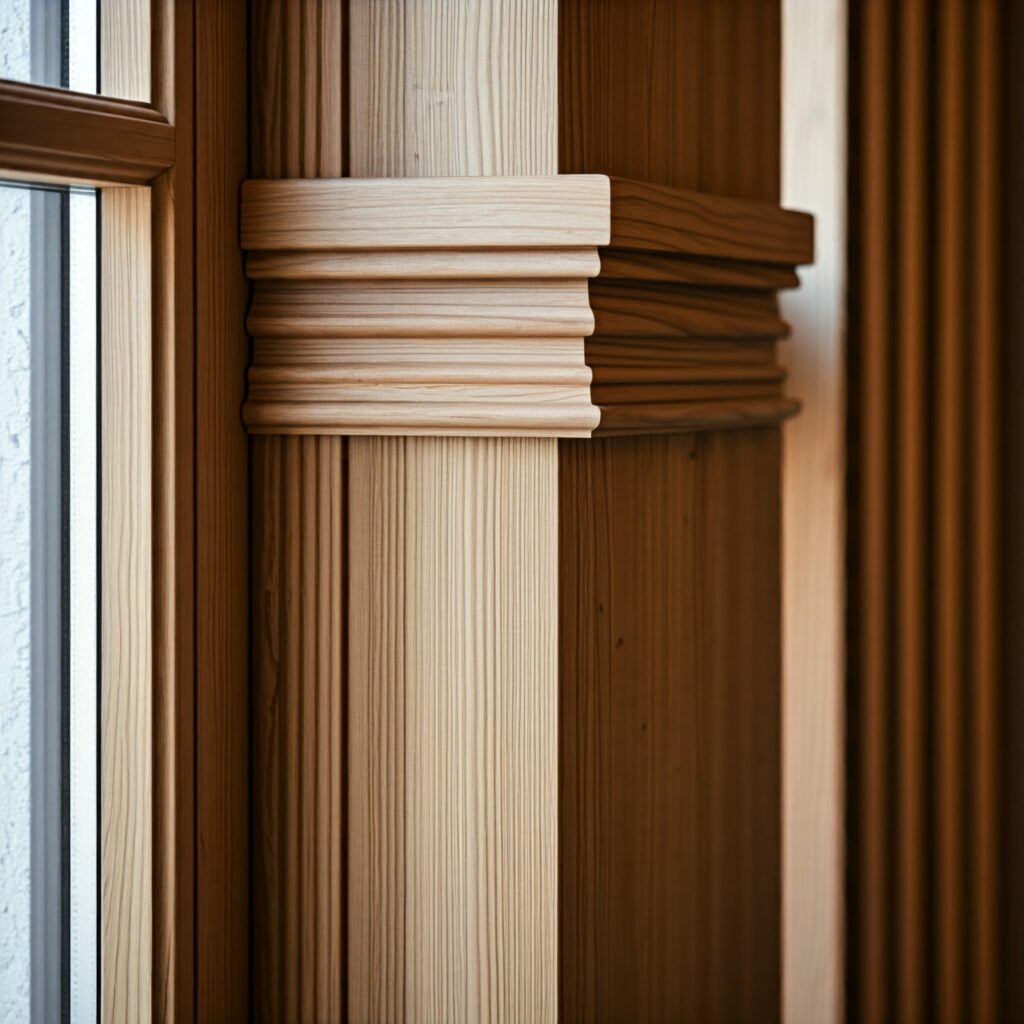
Siding trim around windows, often called “window trim” or “window casing,” plays a vital role in both the look and function of your Chicago home’s exterior. While siding protects your home from harsh Midwestern weather, window trim adds an extra layer of protection and creates a polished transition between windows and siding. Properly installed window trim not only prevents moisture and air leaks but also boosts curb appeal, making it a critical component of any well-designed home exterior in Chicago.
Why Window Trim Is Important
- Sealing Against the Elements
Window trim is essential in protecting your Chicago home from moisture intrusion. Without proper trim, rainwater could seep between the window and siding, leading to mold, wood rot, and even structural damage over time. In Chicago’s climate, characterized by heavy rain, snow, and extreme temperature fluctuations, window trim ensures a tight seal, preventing moisture from finding its way inside. Properly installed trim also helps block drafts, which can be particularly beneficial during the city’s cold winters and hot summers, helping maintain comfortable indoor temperatures and reduce energy costs. - Enhancing Aesthetic Appeal
The right window trim can add a finishing touch to your home’s architectural style. Trim comes in various materials, such as wood, fiber cement, or PVC, and can be customized to match the color and design of the siding. For example, thicker trim in contrasting colors can create a bold, defined look, while a sleek, thin casing might suit more modern Chicago homes. Choosing the right style, color, and profile for your trim can complement the overall aesthetic, making your windows look more refined and your home more cohesive. - Improving Insulation and Energy Efficiency
A well-installed window trim functions as an added insulation layer around windows. Gaps or poorly sealed windows can be a significant source of heat loss, impacting energy bills and home comfort in Chicago. Trim with good insulation properties—especially when paired with proper flashing—minimizes air leaks, reducing the need for excessive heating or cooling. This energy-saving benefit is particularly valuable in an area where seasonal temperature extremes can lead to skyrocketing utility costs. - Concealing Installation Seams
Siding and window materials often don’t fit together perfectly, and window trim helps to cover up any irregular seams. It provides a neat finish by bridging the gaps and concealing edges, giving your Chicago home a professional, polished look.
Choosing the Right Material for Window Trim
Several materials are commonly used for window trim in Chicago, each with its pros and cons:
- Wood Trim: Known for its classic look, wood trim can be stained or painted to match the exterior’s style. However, it requires regular maintenance to prevent moisture damage and warping, especially in Chicago’s wet winters.
- PVC and Vinyl Trim: PVC and vinyl trims are durable, low-maintenance options that resist moisture and insect damage. They’re ideal for Chicago homeowners seeking minimal upkeep and are available in various colors to complement most siding styles.
- Fiber Cement Trim: This option offers excellent durability and is resistant to both moisture and extreme temperatures. Fiber cement trim works well in Chicago’s variable climate, as it doesn’t expand or contract as much as other materials, providing a long-lasting, sturdy trim solution.
- Aluminum Trim: Aluminum is durable and lightweight, making it another low-maintenance option. However, it’s typically used in combination with other materials, as it’s not always as visually appealing as wood or fiber cement.
Window Trim Installation and Maintenance Tips
To get the best performance from your window trim, it’s essential to ensure proper installation and upkeep. Here are some tips to keep your trim in optimal condition:
- Use Quality Flashing: Flashing around the window trim is crucial to channel water away from the frame, particularly in high-rain areas like Chicago. Flashing is typically placed under the siding and trim to form a water-resistant barrier.
- Seal Joints and Gaps: Any gaps between the trim and siding should be sealed with caulk to prevent water and air infiltration. Choose a high-quality, paintable caulk for the best durability.
- Regular Inspections: Regularly inspect your trim for signs of damage, including cracks, peeling paint, or gaps. Early detection of issues allows you to address them before they escalate into larger problems.
- Repaint or Reseal as Needed: Wooden trims may need to be repainted or resealed periodically, while PVC and vinyl trims require minimal upkeep aside from occasional cleaning.
The Value of Professional Installation in Chicago
Window trim installation requires precision to ensure a tight, weather-resistant seal. Working with a local Chicago professional ensures that the trim is installed correctly, with proper flashing and sealing, to protect your home against the elements. An expert installer can also recommend the best material and design for your home, maximizing durability and visual appeal.
In conclusion, window trim around your siding is more than just a decorative feature—it’s a functional necessity that enhances your Chicago home’s protection, energy efficiency, and curb appeal. Choosing the right materials and keeping up with routine maintenance can extend the life of your trim and help you avoid costly repairs in the future. Whether updating your siding or focusing on the trim itself, giving attention to this detail can make a noticeable difference in the appearance and performance of your home’s exterior in Chicago.